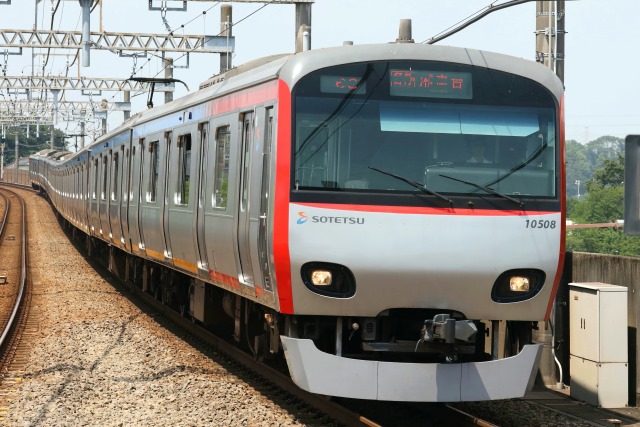Sorry for jumping from one topic to another, but I am going to follow up and explain variation of the EMU Seibu 6000 series a little bit more.
Please look at the photos. This train, Set 6158 of the 6000 series, doesn’t have windows on the door pockets. It belongs to the late 3 sets. As I showed you before, the 6000 series is composed of a total of 25 sets, 250 units. They are famous for having great variety (see my post on 31/1/2020 and 23/9/2024). For example, the early 17 sets have stainless-steel bodies; meanwhile, the late 8 sets have aluminum alloy bodies. The early 2 sets have silver-colored front faces; meanwhile, the late 23 sets have white-colored front faces. The early 22 sets have windows on the door pockets; meanwhile, the late 3 sets don’t have windows on the door pockets. In short, Set 6158 has aluminum alloy bodies, white-colored front faces, and no windows on the door pockets.
Finally, let me explain a little about the technical specifications. One set of the 6000 series is composed of 6 motorcars and 4 trailers. It’s known as Seibu’s first variable frequency drive trains with induction motors. GTO (Gate Turn-Off thyristor)-VVVF (Variable frequency drive) was initially adopted, but later changed to SiC (silicon carbide)-VVVF. It’s also first time to adopt bolster-less bogies. More importantly, the 6000 series had changed the image of the Seibu trains from the somewhat dowdy yellow trains to the urban sophisticated ones.



















